Importance of Rafter Ties in Home Construction
By: Fred Willcox
Copyright© 2019
All Rights Reserved
Without questions, the most common framing problem I see in almost every house I inspect is the lack of rafter ties. Rafter ties are not collar ties. Rafter ties create the bottom of a triangle. Collar ties are high wind load members that keep the framing from separating during periods of extremely high wind loads.
Rafter ties are as required by the model building codes and by basing statics and engineering.
Rafter ties are used to prevent the exterior walls parallel to the joists from rotating out of plumb from the loads imposed roof rafters when the joists are not installed parallel to the rafters.
“Lookout” or “outlook” joist sections, commonly used to support drywall ceiling covering materials, are not rafter ties and these joist sections are nailed in withdrawal, or parallel, to the rafter trust as shown further on in this article. Nails cannot be used as structural joiners when subjected to withdrawal forces. Nails are only strong in shear. Lookout or outlook rafters used to hang drywall are nailed from the back or are toenailed into the joist. Both nailing from the back and toenailing are forms of nailing in withdrawal.
As shown in the references from the IRC (International Residential Code) below, rafter ties are continuous members that create continuity to the frame.
The basis of all structural frames is a triangle. A triangle is the only self-supporting geometric shape.
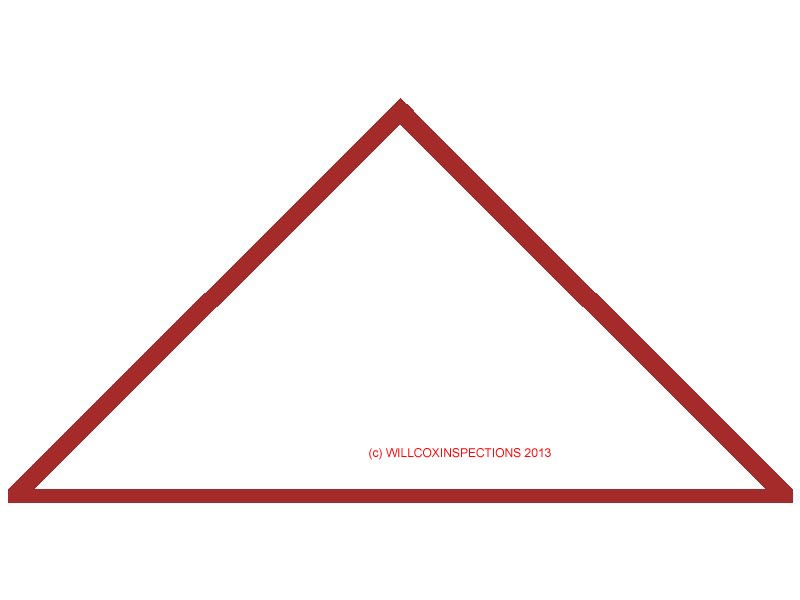
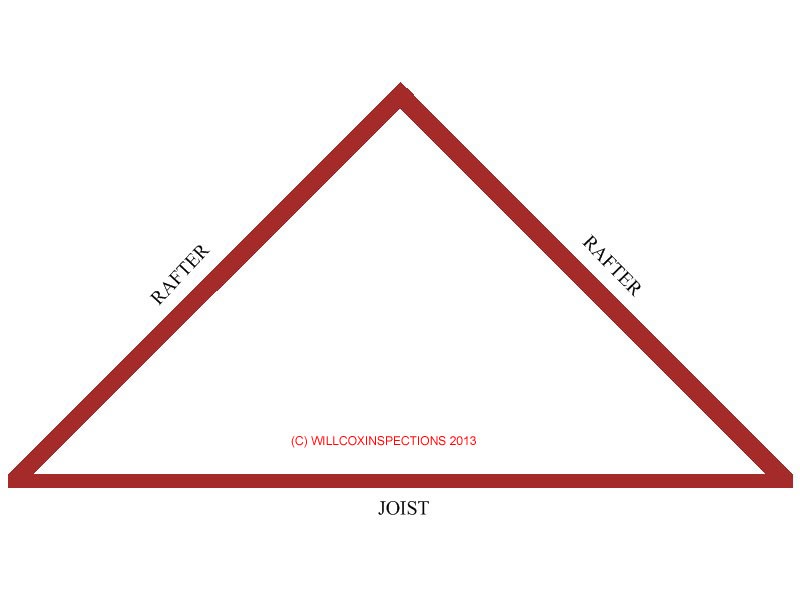
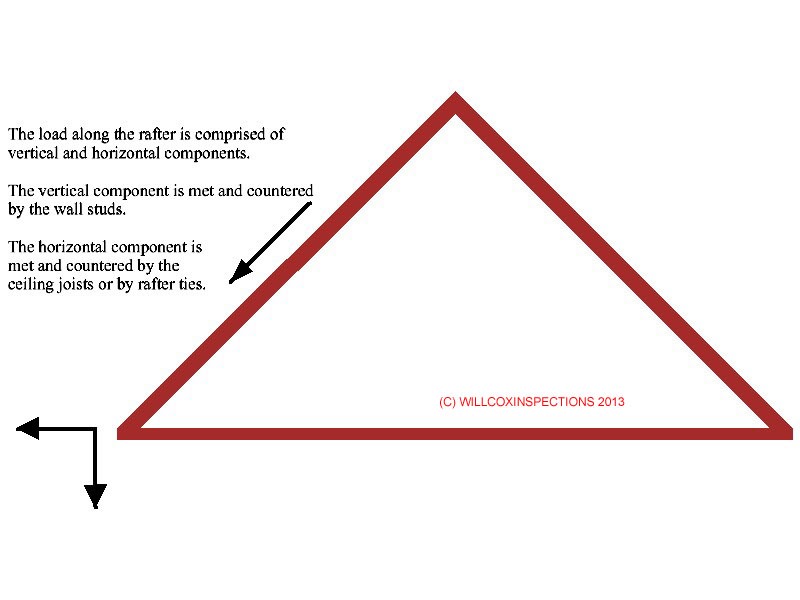
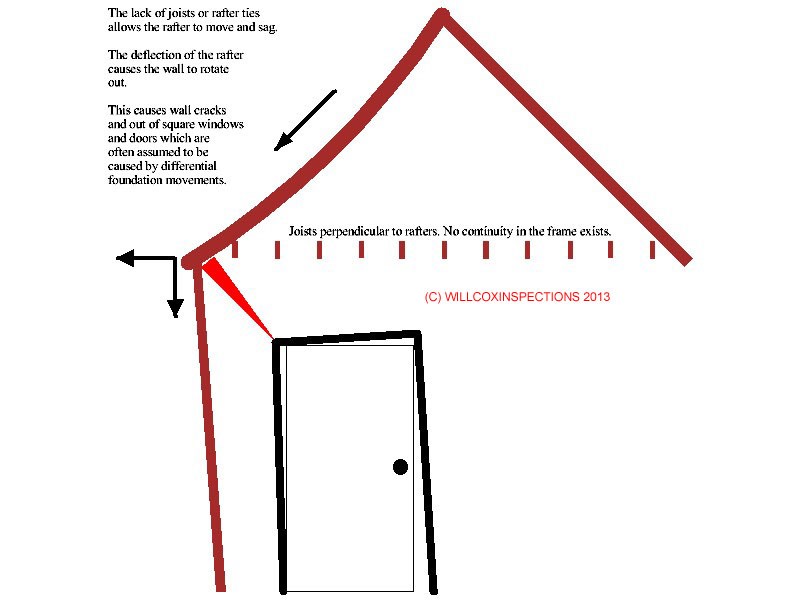
As stated earlier, nails cannot be used for joining structural members when the nail is subject to withdrawal. The nail must be installed across the grain of a board and not into the end of a board. When installed in the end of a board, along the grain of the board, the nail is some 75% weaker as a fastener than when installed across the grain.
The rafter ties, in some areas of the house, could be the strong backs. The strongbacks are “L” shaped wooden members made of boards nailed together. The “L” shape resists easy bending in all directions. Strongbacks are used to support, align and break the span of joists. If the strongbacks are connected to the ends of the rafters or to the tops of the exterior walls and, in some manner, make a continuous tie all the wall between the opposite sides of the house, the strongbacks can be rafter ties.
The requirement for rafter ties comes from basic mechanics, very basic engineering and from Section R802.3.1 of the IRC.
Section 802.3.1 Ceiling joist and rafter connections.
Ceiling joists and rafters shall be nailed to each other in accordance with Tables R602.3(1) and R802.5.1(9), and the assembly shall be nailed to the top wall plate in accordance with Table R602.3(1). Ceiling joists shall be continuous or securely joined where they meet over interior partitions and nailed to adjacent rafters to provide a continuous tie across the building when such joists are parallel to the rafters.
Where ceiling joists are not parallel to rafters, subflooring or metal straps attached to the ends of the rafters shall be installed in a manner to provide a continuous tie across the building, or rafters shall be tied to 1-inch by 4-inch (25.4 mm by 102 mm) (nominal) minimum-size cross ties. The connections shall be in accordance with Table R602.3 (1) or connections of equivalent capacities shall be provided. Where ceiling joists or rafter ties are not provided at the top plate, the ridge formed by these rafters shall also be supported by a girder designed in accordance with accepted engineering practice.
Rafter ties shall be spaced not more than 4 feet (1219 mm) on center.
From the Commentary to the IRC: So that joists do not become accidentally displaced and so that they transfer thrust from the rafters to the ceiling joists, a mechanical connection to supporting members as shown in Commentary Figure 802.3.1(1) must be provided. To resist the horizontal thrust generated at the exterior walls by the loading of rafters, a continuous tie between the exterior walls is required. Commentary Figures R802.3.1 (2) and R802.3.1 (3) illustrate methods of accomplishing this. In Commentary Figure R802.3.1 (3), the ceiling joists running parallel with the roof rafter framing provide the continuous tie. Where ceiling joists are not parallel with the roof rafters, separate cross ties (rafter ties) are to be provided, as shown in Commentary Figure R802.3.1 (2).
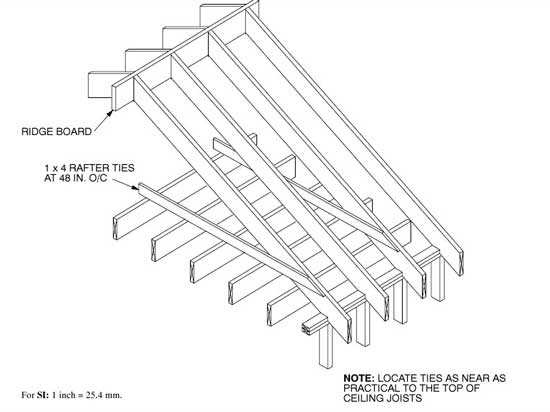
“Rafter Tie: A structural framing member located in the lower third of the attic space that ties rafters together to resist thrust from gravity loads on the roof.”
When you are looking at the framing of a house, you are looking for triangles. The sizes, spacing and what materials are used are engineering functions. Finding the triangles is just a function of looking for them. If the triangles are not there, the frame cannot work properly.
Failure of the frame to perform properly leads to cracks in the wall covering materials and out of square door frames. Almost all homeowners associate these defects as indications of differential foundation movements. In my lifetime and career, I have seen many foundations that were “leveled” when no foundation problem existed. They were “leveled” because they were framed improperly.
